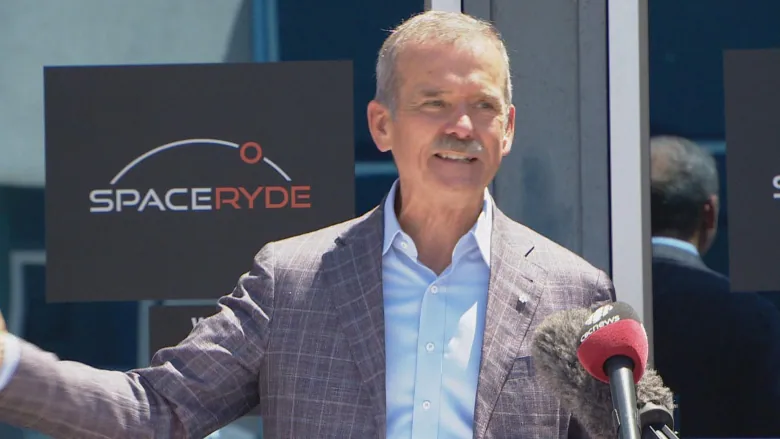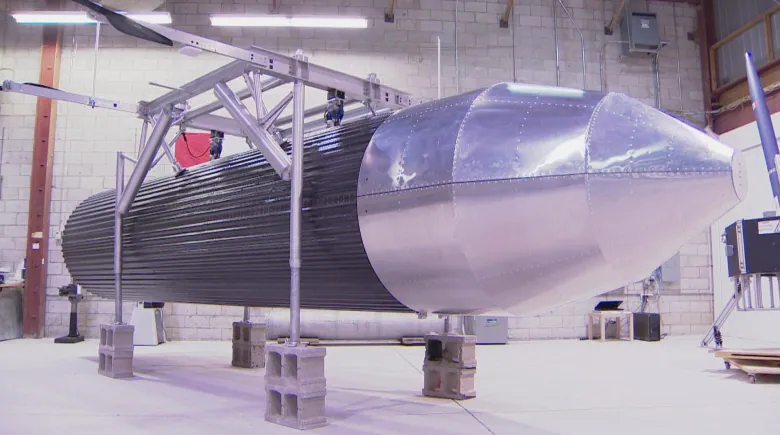Imagine getting the chance to vacation in space: You pack your bags, launch into the heavens and find yourself floating among a sea of stars.
Now imagine having an unexpected allergic reaction. Suddenly you’re hundreds of kilometres above Earth, wheezing, itching with your eyes swollen and no medication in sight.
“Are you going to wait for two months for SpaceX’s next rocket to deliver you the Benadryl?” asks Saharnaz Safari.
“No, you need it now. “
That’s part of the pitch made by Safari at the opening of what’s being billed as Canada’s first rocket factory. As part of a husband-wife team, Safari and Sohrab Haghighat spoke to The Canadian News at the headquarters of their company SpaceRyde just north of Toronto in Vaughan, Ont., alongside the first Canadian astronaut to live aboard the International Space Station, Chris Hadfield.
Their goal: to make history as the first orbital rocket to launch from a balloon — meaning lower cost and on-demand access to space. Think a private Uber-like service for cargo “from the Earth to the Moon and anywhere in between,” they say.
Safari and Haghighat envision getting cargo to the edge of space by balloon, then releasing it, lighting a rocket and using the power of miniature computers to control where it goes in space.
An ‘elegant idea,’ says Hadfield
At a price-tag of $250,000 per trip, it’s a fraction of the cost of what’s currently on offer for a company or entity looking to send satellites into space or get cargo to the moon, Safari says. The competition, Elon Musk’s SpaceX, charges over $1.1 million by comparison, she says.
It’s an “elegant idea,” says Hadfield, who says getting to space now has been accomplished through the “brute power” of burning massive quantities of fossil fuels.

“It’s a physics problem,” he said, speaking at Tuesday’s news conference. “In order to get into orbit, you have to be going eight kilometres a second. Any slower, you fall into the air; any faster, you go out to a higher orbit.”
“But there’s too much friction,” he said. “So you have to get above the air and then you have get going fast enough to stay up there.”
Applications here on Earth
That’s where the balloons come in.
But the technology isn’t just handy for space travellers who might have forgotten something important back on Earth, says Hadfield. It’s also got the potential to make it easier to send satellites into low orbit to help send back valuable information about the health and temperature of oceans and the planet as a whole, he says.
Jason Wood, executive director of space exploration and space industry policy at the Canadian Space Agency, imagines other uses too.
“Think about how that could be helpful in remote or northern communities here in Canada to provide sustainable food sources or another example is health care, in terms of remote medicine.”

Wood says SpaceRyde is part of a larger shift towards more and more commercial actors providing access to space. The industry, by some estimates, is expected to grow to a trillion dollars per year by 2040, he says.
As for Safari and Haghighat, the two met in Waterloo, Ont. during graduate school.
“That’s where we got to know each other and fell in love and eventually got married,” he told The Canadian News.
The pair, married for almost 14 years, are planning their first launch in 2023.
The year after that, their sights are set on the moon.
Reference-www.cbc.ca